Homelessness in Scotland: 2017 to 2018
Information on local authority homelessness applications, assessments and outcomes.
Temporary Accommodation
Background
Homeless applicants may be placed in temporary accommodation while the Local Authority assesses their application or while awaiting the offer of a permanent let.
Since 2002, local authorities have provided the Scottish Government with the total number of households in each type of temporary accommodation at the end of each quarter. This snapshot information (the HL2 return)[10] enables us to explore trends in temporary accommodation since 2002 (Tables 17 to 23).
In addition to the HL2 return, local authorities have more recently provided placement level information on households in temporary accommodation to the Scottish Government (the HL3 return). This has enabled new analysis of households in temporary accommodation within the most recent financial year (2017/18)[11], and information from this is presented for the first time within this section in Tables 24 to 30 and Charts 10 to 20. Additional information about the HL3 data received from all 32 local authorities can be found in the data quality section.
Temporary Accommodation as at 31st March 2018 (snapshot information)
(Tables 17 to 23)
This section provides information on households in temporary accommodation as at 31 March 2018, from the snapshot information collected via the HL2 return.
There has been an overall rise of numbers in temporary accommodation since 2002 (See Table 17 and Chart 10). In 2002 (on 31st March), there were 4,153 households in temporary accomodation. This number gradually increased between 2002 and 2011 – 11,254 households were in temporary accomodation on 31st March 2010. This increase was linked to local authorities preparing for the abolition of priority need in December 2012, as required by the Homelessness etc (Scotland) Act 2003. Since 2010, this figure has remained relatively stable, incorporating a slight dip to 2014 followed by a subsequent rise to 2018. There were 10,933 households in temporary accommodation at 31st March 2018.
Chart 10: Households in Temporary Accommodation at 31st March each year
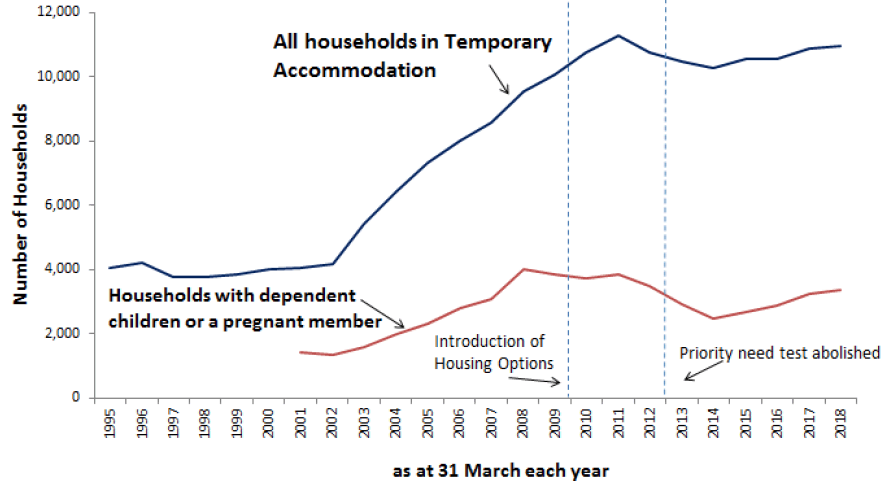
The increase in the overall number of households in temporary accommodation from 2002 is likely to have been initially driven by homelessness legislation, which placed new duties on councils to provide temporary accommodation, advice and assistance for priority and non-priority homeless households. Before 2002, the majority of priority homeless were households with children. Following this new duty there was a notable increase in the number of single people applying for homelessness assistance. These single people were also eligible for temporary accommodation.
From 2010 the number of homelessness applications has been falling, likely in part due to a consequence of the development of homelessness prevention activities by councils through adopting a 'housing options' approach to meeting housing need. This change in practice may also have contributed to the overall drop in numbers in temporary accommodation between 2011 and 2014, although the number of households in temporary accommodation has since increased between 2014 and 2018.
On 31 March 2018, the latest snapshot figures show that:
- There were 10,933 households in temporary accommodation, an increase of 60 households (0.6%) compared to the previous year. This figure remains lower than that recorded in 2011, when there were 11,254 households in temporary accommodation (Table 17).
- Of these households in temporary accommodation, 3,349 had children or a pregnant member – an increase of 118 households (4%) compared to the same date one year ago, and the fourth consecutive annual increase (Table 18 and Chart 10).
- The number of children in temporary accommodation increased by 557 children (9%) to 6,615 compared to the same date one year ago, and the fourth consecutive annual increase (Table 19).
Local Authority variation
Chart 11 below shows the general shape of the variation amongst households in temporary accommodation in local authorities from June 2002 to March 2018. The overall rise in the Scotland level figure over the years reflects this rise amongst many local authorities.
However, although the majority of local authorities have seen an increase between 2002 and 2018, it should be noted that some have seen a decrease in numbers in temporary accommodation in recent years. Argyll & Bute, Dumfries & Galloway, Inverclyde and Perth and Kinross for example, have seen numbers decline since part way through this time period.
Comparing 31st March 2018 with 31st March 2017, more local authorities (15) saw a percentage decrease in the number of households in temporary accommodation, than those which saw a percentage increase (13 local authorities) and those whose temporary accommodation remained the same (4 local authority) (see Table 19).
Chart 11: Temporary Accommodation by local authority
From 30 June 2002 to 31st March 2018
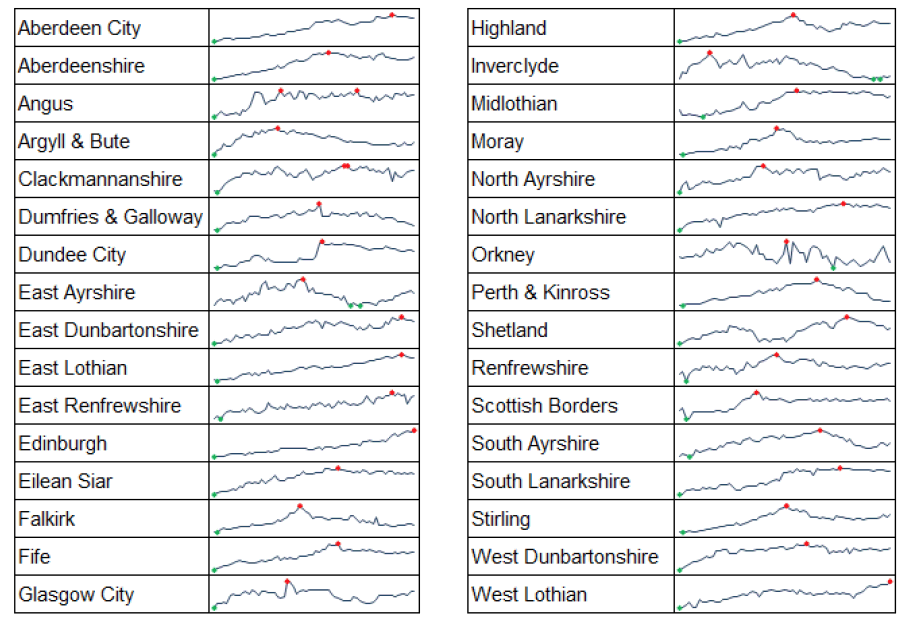
Types of temporary accommodation used
The majority of households in temporary accommodation at 31st March 2018 were in Local Authority or Housing Association accommodation (59%), with a further 16% in hostels and 11% in bed and breakfast (Table 20).
Households with children or pregnant women are mainly provided with Local Authority or Housing Association accommodation (80%), with a small proportion (1%) being placed in bed and breakfast accommodation (Table 21). On 31 March 2018, there were 39 households with children or pregnant women in bed and breakfast accommodation. This figure has increased (from 33 on 31st March 2017) since the same date one year ago.
On the 31st March 2018, there were 20 breaches (mostly in Edinburgh) of the Homeless Persons (Unsuitable Accommodation) (Scotland) Order 2014 (Table 23).
This is an increase compared to the same date one year ago[12] when there were less than 4 breaches of the Order, which may be a reflection of the Homelessness Persons (Unsuitable Accommodation Order) (Scotland) Amendment Order 2017, implemented from 2nd October 2017. The 2017 Amendment Order specifies a reduction in the number of days that local authorities can use unsuitable accommodation such as bed and breakfasts for families with children or pregnant women from 14 to 7 days, except in exceptional circumstances. Further information on the number of breaches across all placements throughout 2017/18 is provided later in this section.
Placement level analysis of Temporary Accommodation usage in 2017/18
This section provides a range of new analysis and information on households in temporary accommodation throughout the year 2017/18, based on the placement level data collected in the HL3 return.
Numbers of households (Tables 24 to 27)
Between 1st April 2017 and 31st March 2018, a total of 20,320 unique households entered temporary accommodation within this year (Table 24). Over two-thirds of these households (68%) were single person households, whilst around a quarter (26%) contained children (Table 25).
During the same time period, 20,450 households exited temporary accommodation, a figure 1% higher than the number of households entering temporary accommodation. 69% of the households exiting temporary accommodation were single person households, and 25% contained children (Table 25), similar percentages compared to households entering temporary accomodation.
Table 26 presents information on the number of households entering and exiting temporary accommodation during 2017/18 by type of accommodation.[13] It is worth noting that there were over 3,000 more households exiting social sector accommodation (local authority ordinary dwelling and housing association accommodation) compared to entering this type of accommodation. Conversely, there were over 2,000 fewer households exiting bed and breakfast accommodation compared to entering this type of household during the time period. However some of these differences are likely due to how some households have been moving between different placements whilst in temporary accommodation, for example some households may have been placed in hostel or bed and breakfast type of accommodation when they first entered temporary accommodation, after which they may subsequently have been placed in social sector or other types of temporary accommodation before exiting temporary accommodation completely.
Table 27 provides information on the numbers and percentages of households entering and exiting temporary accommodation by both household type and accommodation type. This shows that there are some differences in placements by household type. For example 90% of households entering temporary accommodation in hostels are single people, whilst 54% of households entering temporary accommodation in housing association dwellings contain children.
It should be noted that the information presented on household type is derived from the information on household type as at the time of the original homelessness application, and therefore may not reflect the actual composition of the household whilst in temporary accommodation.
Chart 12A shows that the majority (59%) of households that exited temporary accommodation during 2017/18 had one placement in temporary accommodation. A quarter (25%) of households had two placements in temporary accommodation and 17% had three or more placements. This reflects that most households using temporary accommodation are placed once, but that there are some who move through multiple temporary accommodation placements.
Chart 12A: Number of temporary accommodation placements per household
Based on a count of unique households exiting temporary accommodation during 2017/18
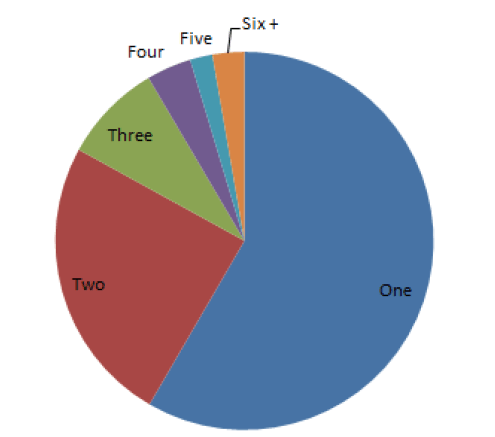
Total duration in temporary accommodation – at a household level (a measure of duration across all placements that a household has been in)
Household level analysis (Table 28)
These figures look at total duration in temporary accommodation across all placements, i.e. where a household has had more than one placement then the average time figure relates to the total time spent across all placements.
Across all local authorities during 2017/18, average lengths of time of around 150 to 200 days per authority are common for temporary accommodation durations in 2017/18.
At the Scotland level, households with children tend to be in temporary accommodation for longer (204 days for households with children compared to
161 days for households without children) . This is particularly pronounced in some local authorities (for example, in East Dunbartonshire, the average number of days is 376 for households with children and 242 for households without children). Although it is worth noting that the number of families is considerably smaller than the number of only adult households.
Chart 12B shows that of the 20,450 households which exited temporary accommodation during 2017/18, the majority (68%) had a total duration of 5 weeks to 12 months, this includes 4,344 households (21%) which were in temporary accommodation for 5 to 12 weeks, 4,770 households (23%) which were in temporary accommodation for 3 to 6 months and 4,784 households (23%) with a duration of 7 to 12 months. A total of 2,582 households (13%) were in temporary accommodation for a year or longer, whilst 4,006 households (20%) were in for a
4 weeks or less.
Chart 12B: Number of households by total duration in temporary accommodation
Based on a count of unique households exiting temporary accommodation during 2017/18
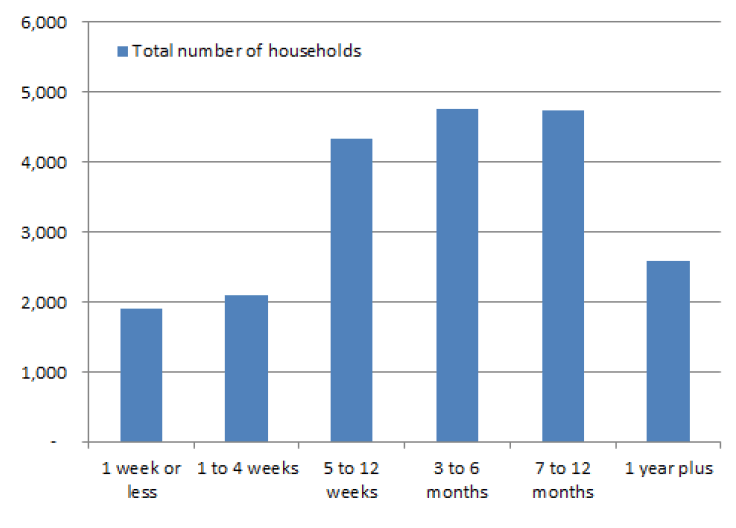
Duration in temporary accommodation (within each placement)
Placement level analysis (Charts 13 to 20)
Chart 13A shows that of the 37,071 placements which were closed during 2017/18, the majority had a duration of 12 weeks or less, this includes those that lasted one week or less (22%); those that lasted 1 to 4 weeks (19%) and those that lasted 5 to 12 weeks (24%). 4% of placements had a duration of a year or longer.
Chart 13A: Number of days in temporary accommodation
All placements exiting during 2017/18
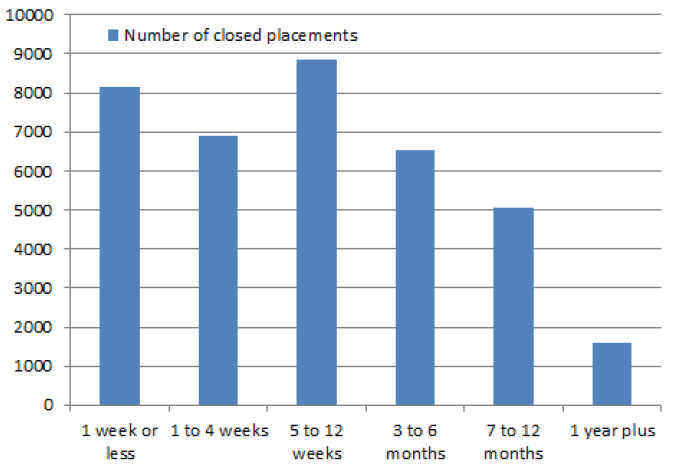
Chart 13B summarises the total number of days that households have spent in temporary accommodation (closed placements only) in each local authority. Glasgow and Edinburgh have more than double the number of household days compared to any other local authority.
Chart 13B: Total number of days in temporary accommodation
All placements exiting during 2017/18
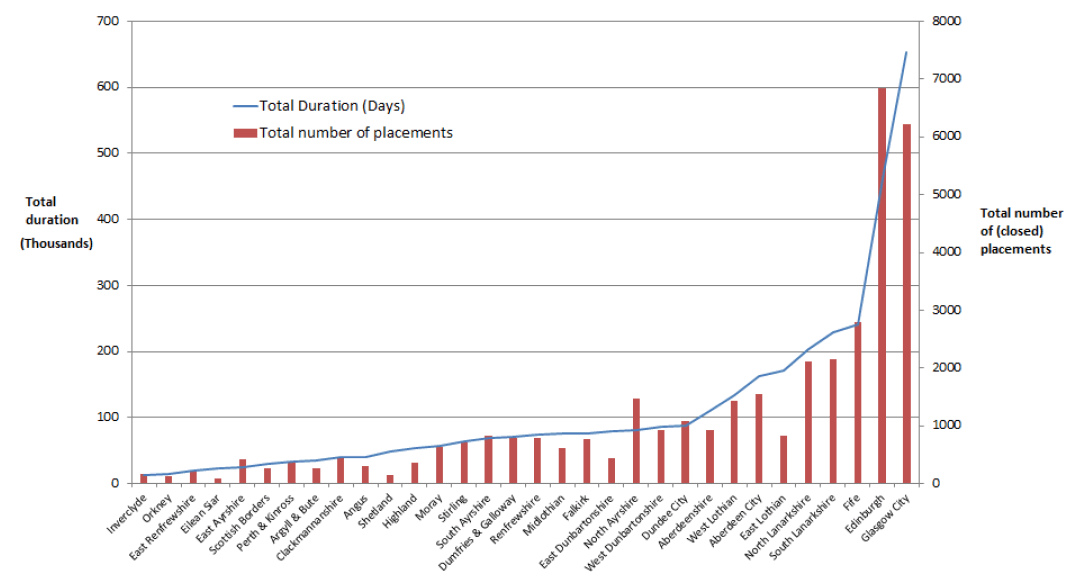
Chart 14 shows that across temporary accommodation placements which ended during 2017/18, the average length of stay can vary by accommodation type. Local authority, housing association and private sector placements are likely to involve longer periods (i.e. 3 months or longer). Most hostel placements last 12 weeks or less. Bed and breakfast placements tend to be much shorter in length (most placements fall in the 1 week or less category); nonetheless, the chart shows that in some cases, such placements last for longer than 7 months and in some cases, over a year.
Chart 14: Duration in Temporary Accommodation by placement type
Based on the duration of individual placements that ended during 2017/18
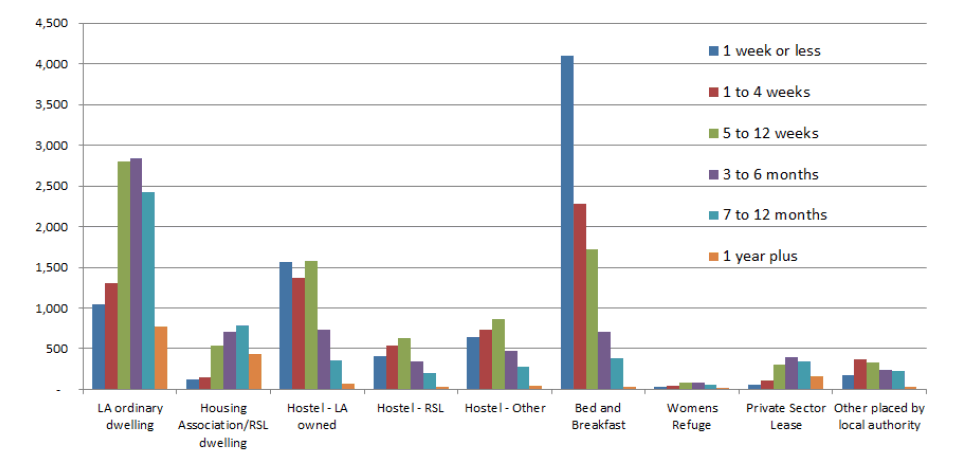
Chart 15: Duration in Temporary Accommodation by household type
Based on the duration of individual placements that ended during 2017/18
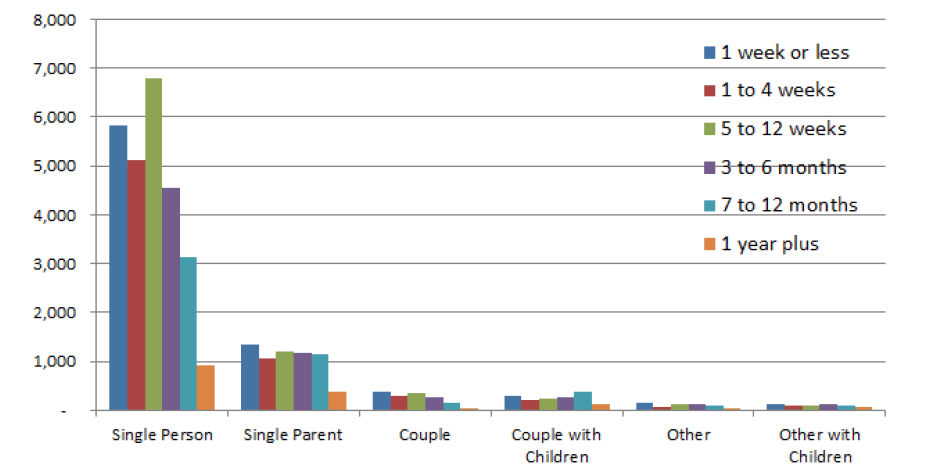
Chart 15 shows that the majority of single person households are in temporary accommodation placements for shorter periods (12 weeks or less); this is likely due to the volume of single person households in accommodation types which are intended to be shorter-term, i.e. bed and breakfast accommodation and hostels (Table 28). For other household types there is a fairly constant distribution across the duration periods other than lower numbers for 1 year plus.
Local authority variation in placement duration
Most local authorities have an average placement duration of around 100 days (Chart 17). This is the average length of time for all placements.
Chart 17 shows that some local authorities with a relatively small number of placements exiting temporary accommodation during 2017/18 can have the longest average stays (for example, Shetland and Eilean Siar). Conversely, local authorities with a much greater volume of placements (Glasgow and Edinburgh), can have smaller average durations, particularly Edinburgh, where the average placement is less than 70 days.
Chart 17: Average duration in Temporary Accommodation by local authority
All placements exiting during 2017/18
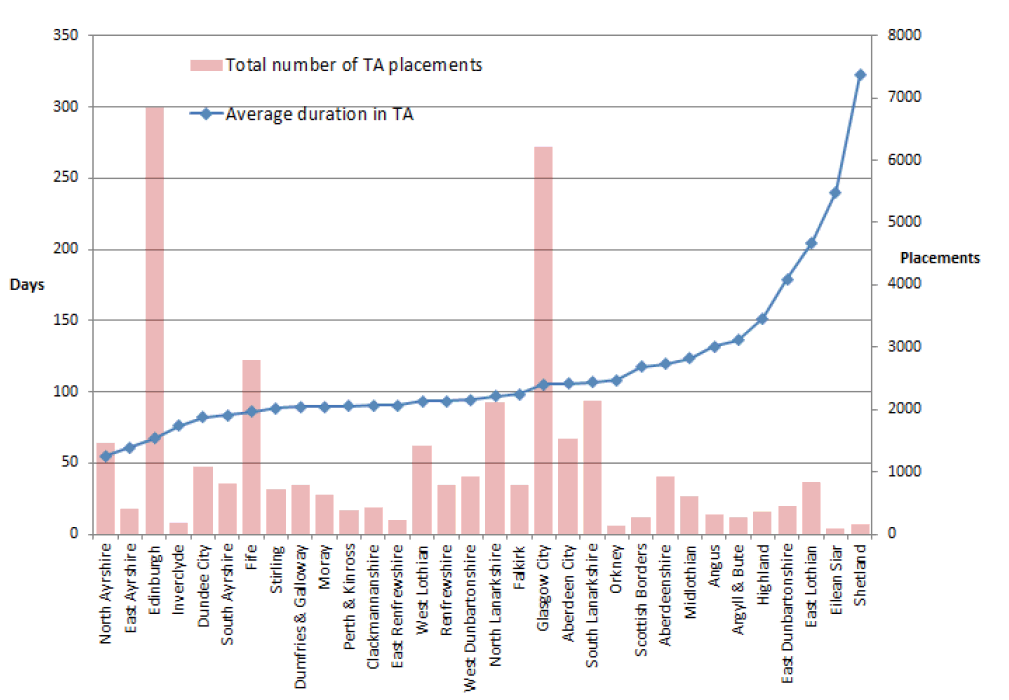
Different local authority trends emerge when looking at average time in specific temporary accommodation types. Notably, some local authorities do not use some accommodation types, for example stock transfer local authorities make very little, or no use of local authority dwellings (Glasgow, Scottish Borders, Dumfries and Galloway, Argyll and Bute, Inverclyde and Eilean Siar); other local authorities do not use Housing Association accommodation (for example, Aberdeen City, Clackmannanshire and Fife). See Chart 18 to see average duration by local authority dwellings and Chart 19 for average duration in Housing Association dwellings.
Chart 18: Average duration in local authority dwellings
All LA placements exiting during 2017/18
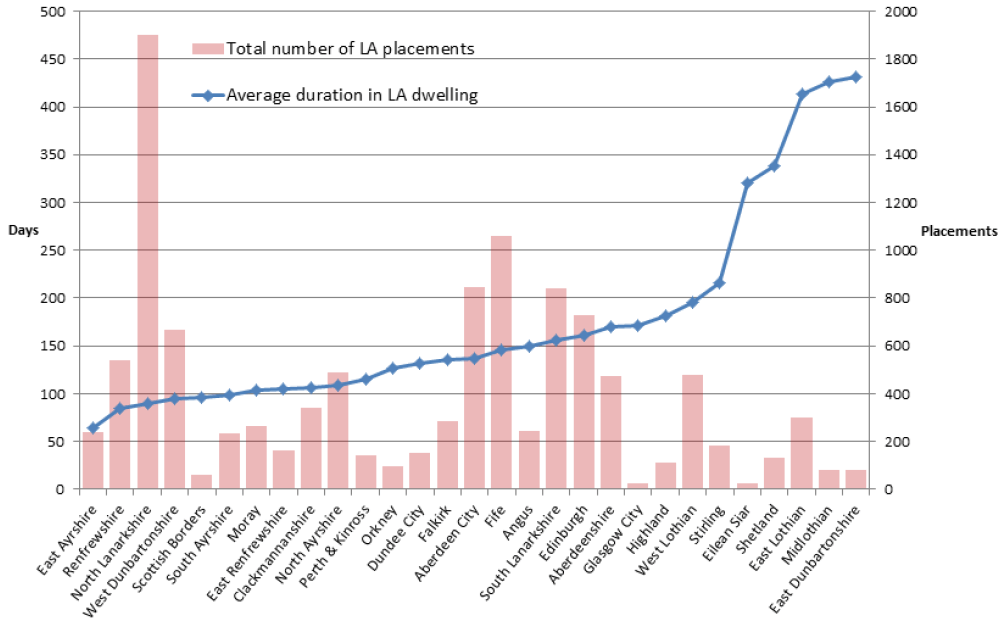
Chart 19: Average duration in Housing Association accommodation
All housing association placements exiting during 2017/18
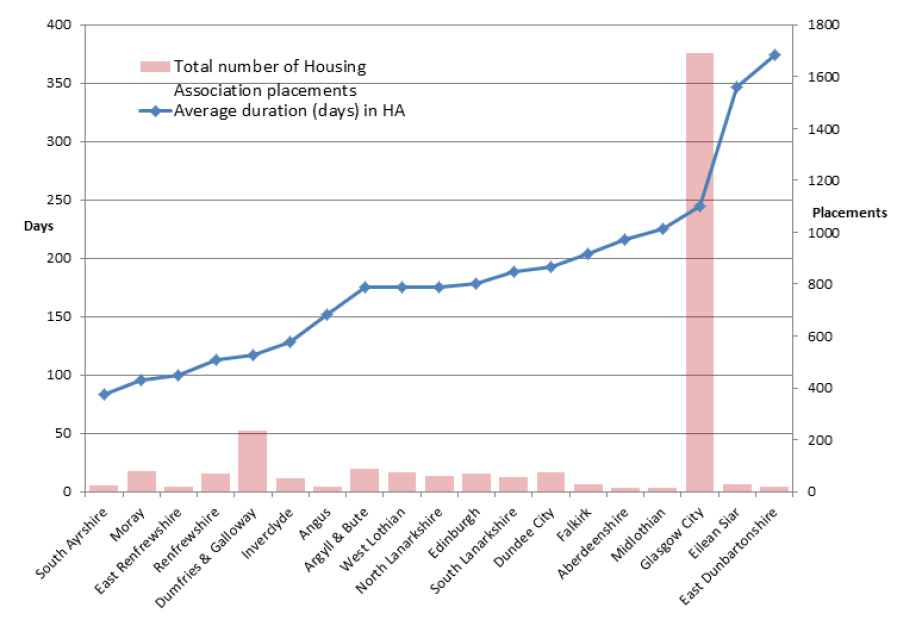
Chart 20 shows that average length of stay in B&B accommodation (for local authorities which use this accommodation type) ranges between 20 and 40 days for most local authorities (including Edinburgh and Glasgow). Three local authorities (Aberdeen City, East Lothian and Eilean Siar) have average durations over 60 days.
Chart 20: Average duration in Bed and Breakfast accommodation
All B&B placements exiting during 2017/18, local authorities with 10 or fewer placements not presented
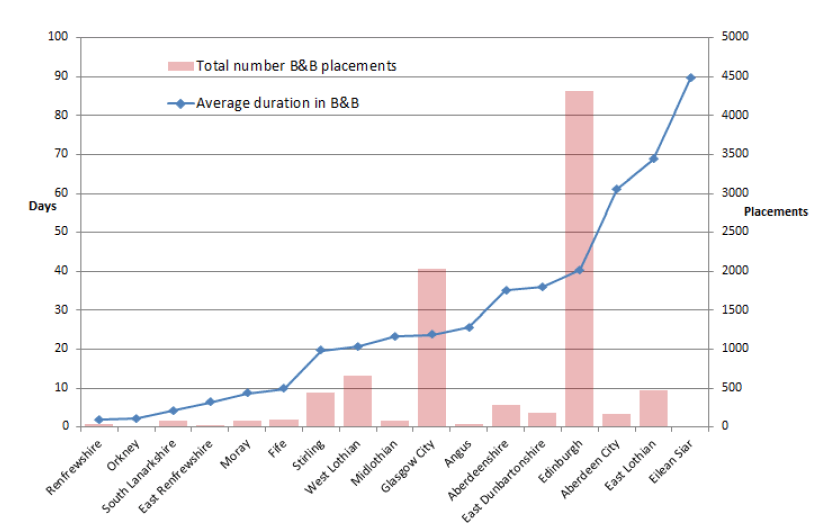
To note, several local authorities did not use bed and breakfast accommodation during 2017/18: Argyll & Bute, Dumfries & Galloway, East Ayrshire, Falkirk, North Ayrshire, North Lanarkshire, South Ayrshire and West Dunbartonshire.
Applications in which temporary accommodation was not offered
An HL3 return is completed when a local authority has a statutory duty to provide temporary accommodation under the homeless persons legislation, however, a local authority is also required to indicate when they do not offer any temporary accommodation to a household and thus, are acting unlawfully. During 2017/18, 3,200 HL3 applications were ‘not offered’ temporary accommodation (Table 29). The majority of these cases were in Glasgow.
Breaches of the Unsuitable Accommodation Order
In addition to the information on breaches available through the HL2 (the number of breaches at a ‘snapshot’ date), the HL3 return provides the number of breaches throughout the time period; we would expect the number of breaches shown through the HL3 to be higher as these are based on breaches throughout the year rather than a single point in time. In total, there were 400 breaches of the Homelessness Persons Unsuitable Accommodation Order during 2017/18 (Table 30), based on temporary accommodation placement cases closed during this year.
A greater number of breaches of the Order were recorded in the most recent two quarters (235 between 1 October and 31 March) compared to the first two quarters (165 between 1 April and 30 September). This is likely due to the Amendment Order 2017, which was implemented from October 2017 and which shortened the number of days that local authorities can use unsuitable accommodation, such as bed and breakfasts, for families with children or pregnant women from 14 to 7 days, except in exceptional circumstances. The majority of breaches during 2017/18 were in Edinburgh, but there were nine other local authorities in which breaches of the Order were recorded.
Monitoring of Temporary Accommodation
We would be pleased to hear your views on the new placement level HL3 analysis provided in this publication, and further on any additional tables or charts which you may find useful. You can get in touch with us via email at homelessness_statistics_inbox@gov.scot
Contact
There is a problem
Thanks for your feedback